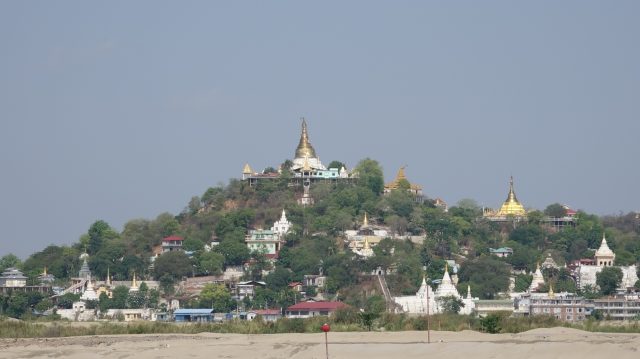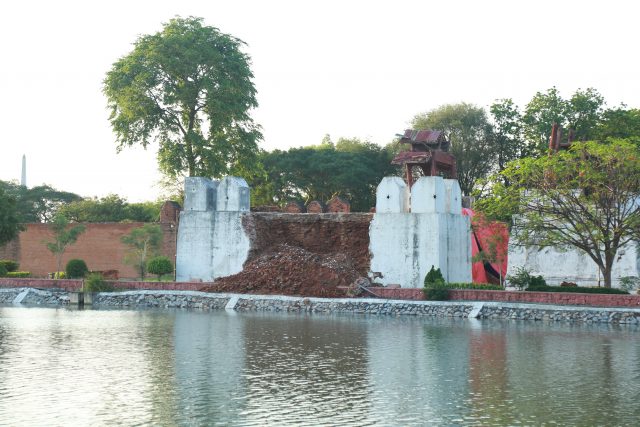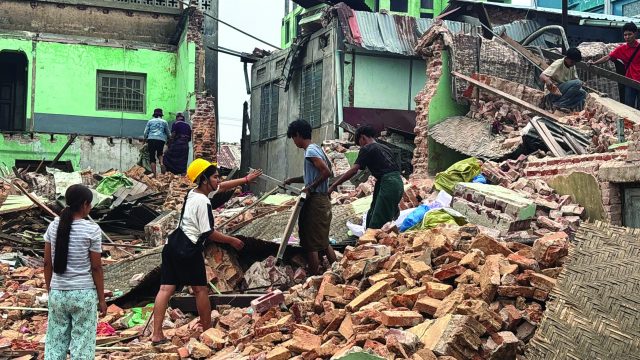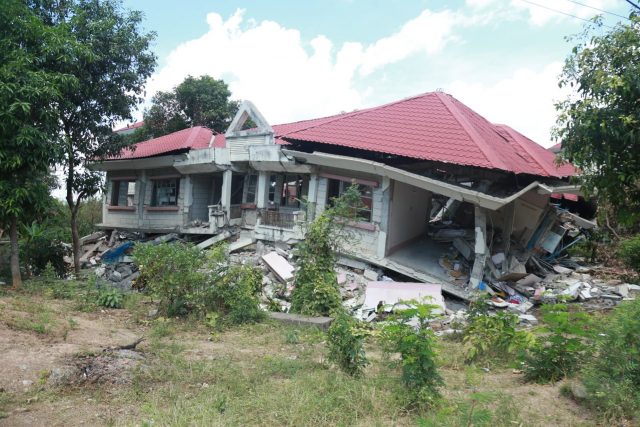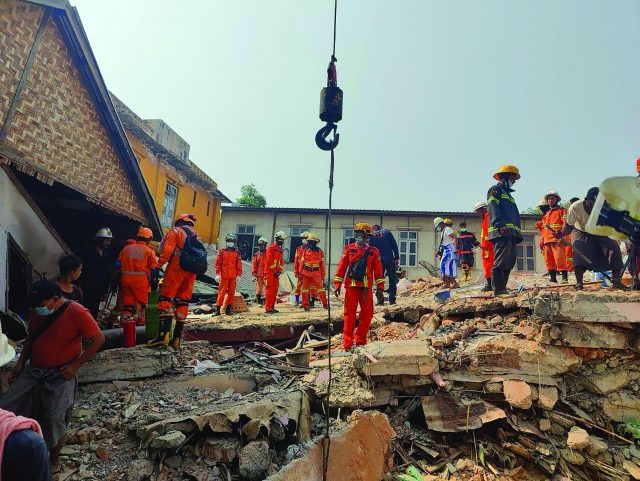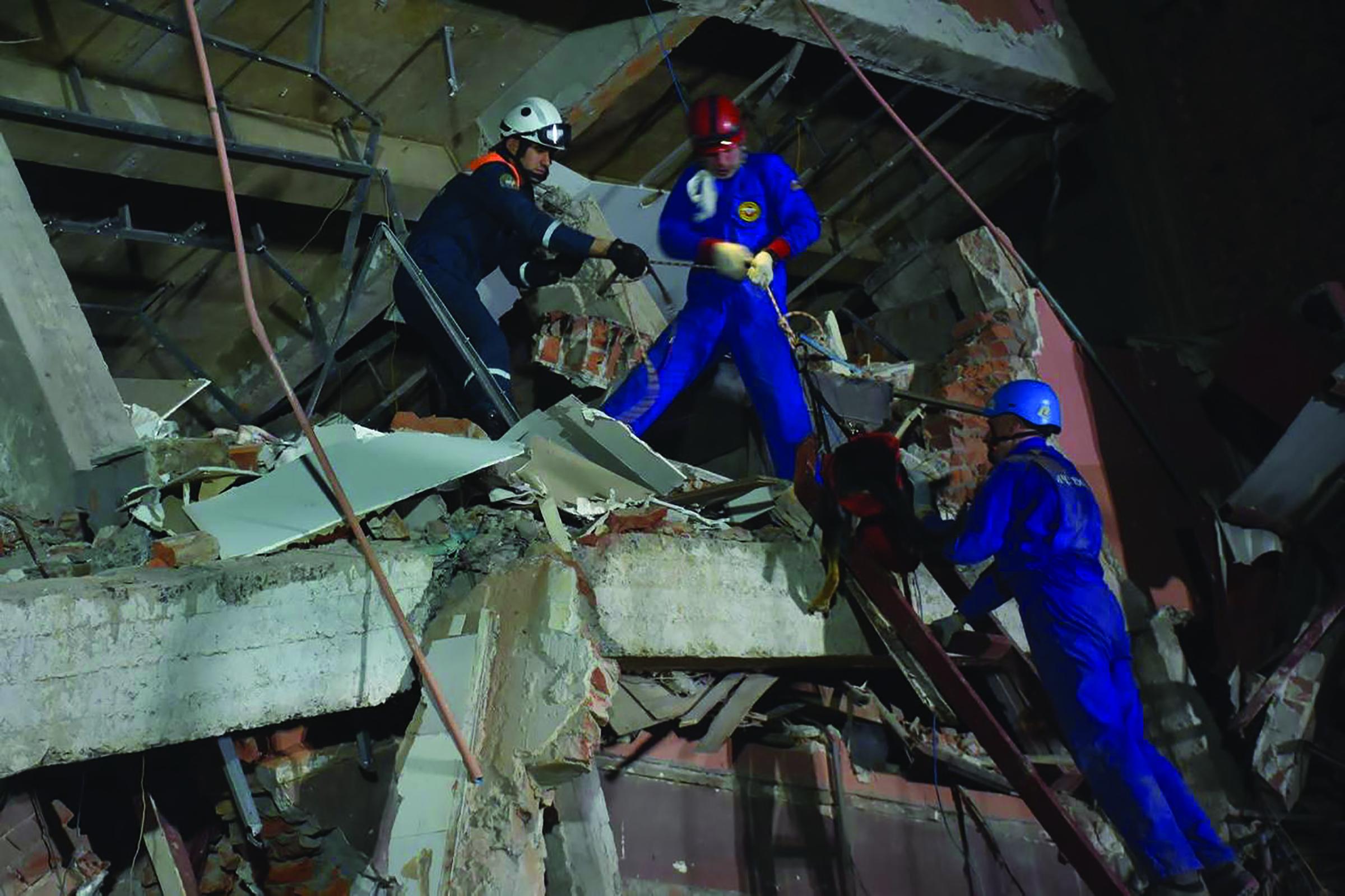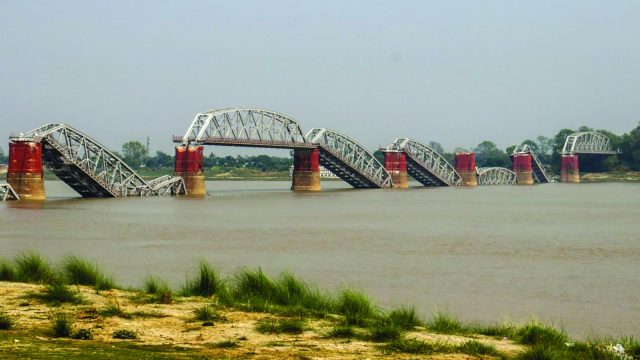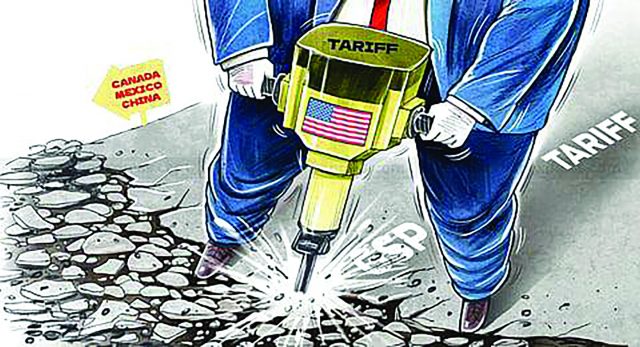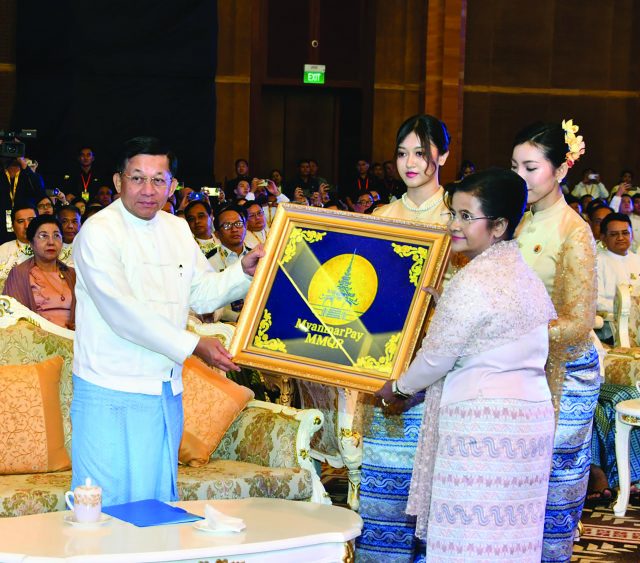It may seem quite quiet and cozy in the centre of Yangon right now, but the people were shaken and stirred since the swinging and swaying started by 7.7 magnitude earthquake with the epicentre 10 mile underneath the ground near the city of Sagaing. Some of them are still out onto the streets in the middle of the night, not because of insomnia, but because of the seismophobia.
For the people of Mandalay, Sagaing and Nay Pyi Taw, the experience can be a lot worse. The majority in all these three cities were still sleeping rough on the streets, as subsequent aftershocks came in incessantly. In fact, there are nearly 50 aftershocks from the judgement day till April 04. A lot of people are still feeling very uneasy about the current situation. While Mandalay and Nay Pyi Taw residents may only have to suffer the elements outdoor, while painfully viewing their dilapidated houses, condos and apartments, spare a thought of the people of Sagaing. Nearly 100% of the houses in the cities were damaged by the earthquake. And due to the collapse of the old bridge and the damage to the new bridge (the only two bridges that span across the Ayeyarwaddy river connecting Sagaing and Mandalay), people are having to cross the mighty river using barges only. That makes the rescue efforts close to impossible.
Most of the surrounding areas of the Sagaing city was controlled by PDF terrorist forces. They even shot at some aid convoys coming into Sagaing for rescue efforts. Because of that double whammy, the previously clear air of Sagaing is now taken over by the stench of putrefaction everywhere. In the excessive heat of the summer, dead bodies take less than two days to decompose, worsening the already desperate situation and health of the survivors.
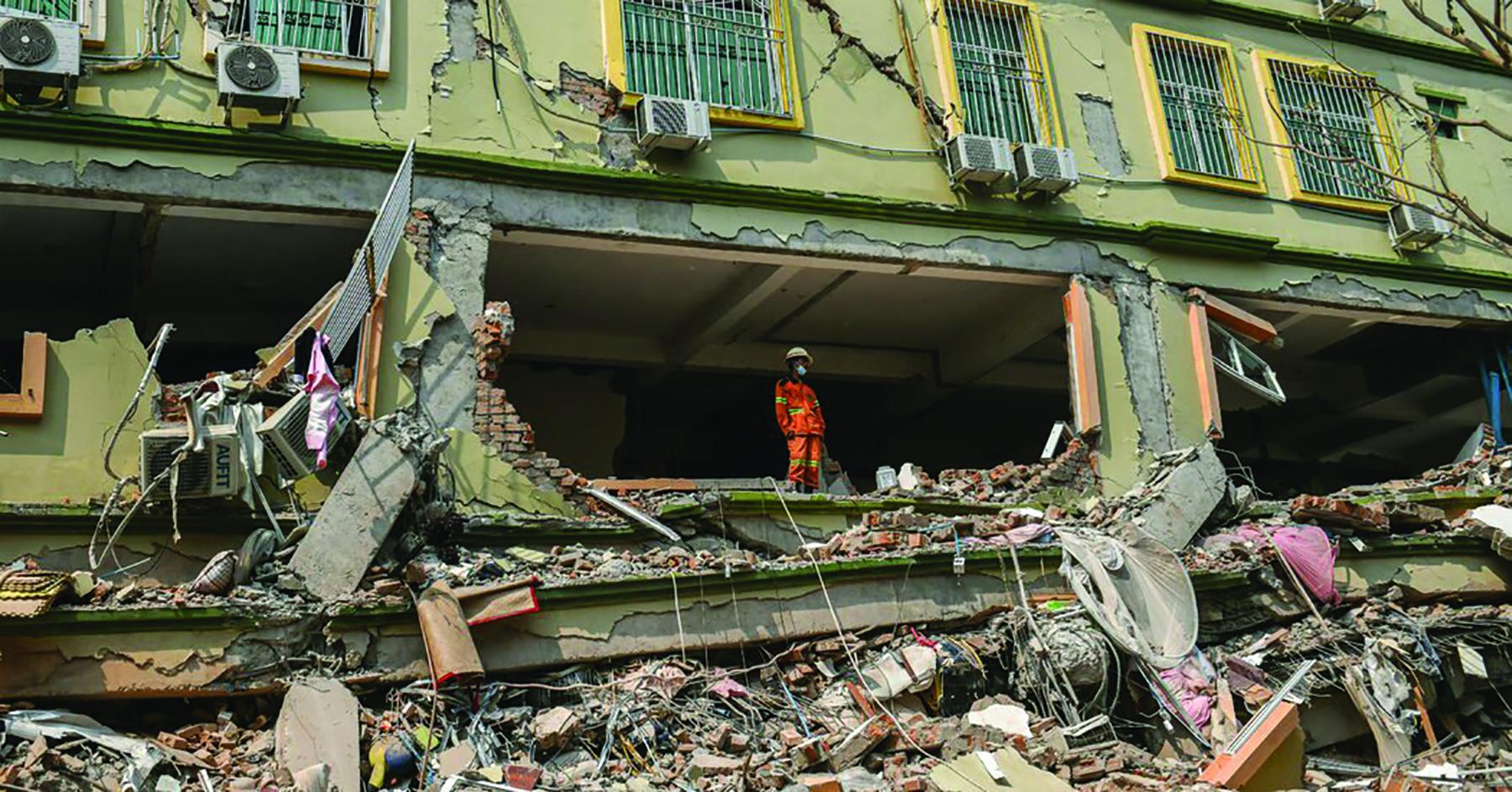
MI has spoken to one lady, Ma Ni from Sagaing who has been working in Yangon since Covid times. Her family has to run from their home town in upper Sagaing region, due to PDF terrorists. The PDF terrorists burned their two houses. The family rented a house in Sagaing and survived with whatever little provisions that had. Now Ma Ni has not heard from her family since earthquakes. The phone calls went unanswered. She feared all of them might be dead because of the quake.
Infrastructure is bare bone now
Most of the roads in affected cities are now totally unusable, due to fissures, fault lines, waves and collapsed buildings and debris. Electricity is still out as of April 4 in these cities. Even Yangon was out of electric supply for nearly the whole days for three days in a stretch. Since most of the water supply is through underground water in Myanmar, water pumps are a must for a continuous supply of this basic necessity. And pumps need power to run.
The highways were gone too due to the sinking of the roads, it would take months to repair, optimistically speaking.
Collapse of many large buildings and condos would take years to clean up, denying residents of the standard of living that they were accustomed to a couple of years ago.
The government services
Civil servants are now living rough as their quarters in Nay Pyi Taw are no longer safe to live in. Even though rescue teams from friendly countries bought tents and tarpaulins in, the summer heat, which is highest in central regions of Myanmar traversing from the capital until Sagaing and Mandalay, no one is sleeping in these tents or under these tarpaulins.
Without proper sanitary facilities, communicable diseases would start to spread, making the government resources even more thinly spread. The government is no doubt doing its best within its limited capacity and budget, but without international help, the recovery would take doubly long.
Even now, with ministries offices in tatters, the approvals, payments, payroll and transactions are expected to delay, brining more misery to the helpless civil servants and general public.
The remains of the day
As of April 4, the death toll has creeped up close to 5,000. When the dust settles it is expected to probably reach close to 10,000 people. An enormous loss of life by any standard. Yet it would take close to a decade for the cities to recover.
In a country as poor as Myanmar, under attacks by its own NNCP terrorists, besieged by 75 years of civil conflicts, we have to ask our lord and heavenly beings above us – why must we suffer some more! Is Covid, flood, infighting, drugs, scams and recessions not enough for us? While hoping that this earthquake would be the last disaster for all of us, while looking at the horizon, we see serious storms brewing, some even thinking of ballooning into major cyclones, in the upcoming raining season. While currently being down on our luck, our unlucky streak may not be over that soon.


